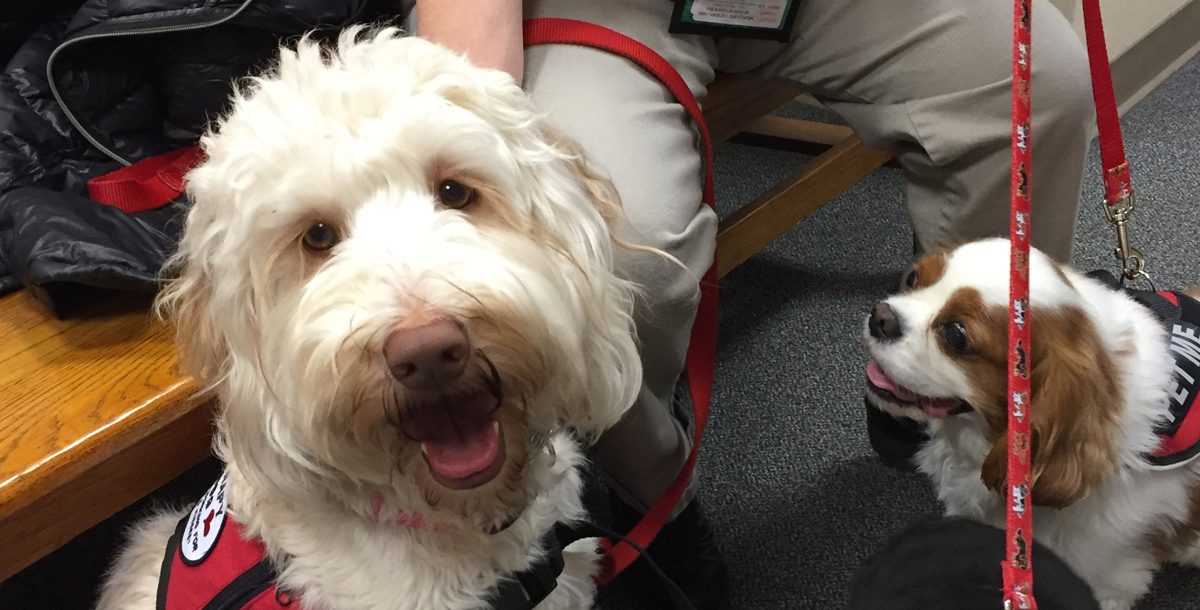The health benefits of therapy dogs are allowing more furry friends to enter the hospital setting.
Studies show pets can positively affect measures of health, including decreased blood pressure, cholesterol and triglyceride levels. In addition, research shows that pets, particularly dogs, can lower stress and anxiety levels, among other emotional benefits.
Sandy Kordis-Rubin, nurse practitioner at Mercy Health – Milford Family Medicine, has been involved with therapy dogs for more than 30 years and has witnessed this firsthand.
“I’ve seen magic. Things happen when dogs are around. Emotions change. A natural smile is immediately placed on a frowning face,” she says.
A therapy dog evaluator for the tri-state area, Sandy helps hospitals throughout the region develop structured pet therapy programs. Ultimately, her efforts have grown the pool of therapy dogs working in the Cincinnati area.
“I’ve been told that I test for a dog’s heart,” she says of her instincts.
For Sandy, there’s no special training required prior to testing. She tests dogs of all breeds as well. The first characteristic she looks for in a potential therapy dog is immense kindness. Beyond that, the dog needs to show obedience skills and the ability to listen to their owner.
Being a therapy dog is also a learned process. At first, dogs can be unsure walking into the new environment that is a hospital. Once they become familiar and their owners reassure them, each dog begins to act on instinct, responding to patients who need their presence.
Not only does Sandy perform evaluations, she also works with her own therapy dog. Gaby (left in the photo), a five-year-old doodle, has been visiting hospitals for most her life.
Gaby works primarily with cancer patients and has picked up sensing individual needs. Sometimes Gaby sits beside the patient letting them pet her, other times she lays at their feet. If she senses they need a laugh, she will do a trick or something silly.
“I just follow her lead,” states Sandy. “Therapy dogs understand the emotional hurt, the pain. They don’t know what is wrong, but they know there is something wrong.”
While they are a team, Sandy says her role working with Gaby is blending in with the wallpaper.
“Patients rarely talk to me. It’s all about the dog,” she explains. “People sometimes just hold Gaby and cry, others sit and talk to her for as long as they need.”
At a time and in a place where they are least expected, therapy dogs are able to help hospital patients in powerful ways.
“A therapy dog does not cure anyone, but they certainly add to the healing process.”
Visit Mercy.com to learn more.






